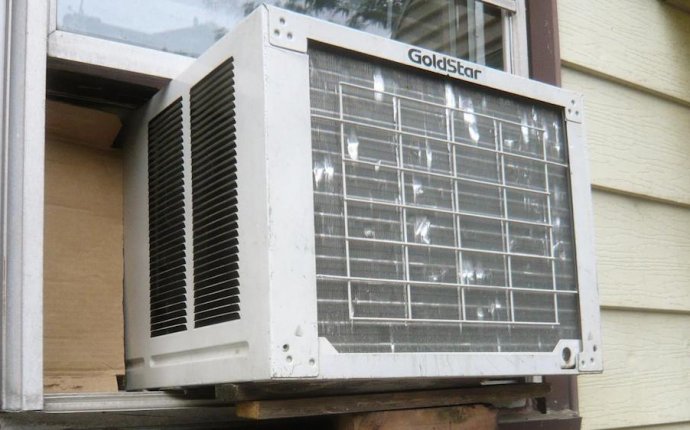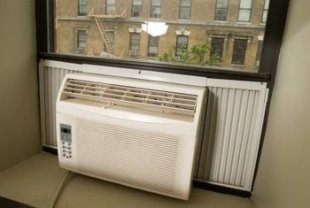
How to Fix a window air conditioner?
 Window air conditioners are cost-effective and can provide relief quickly.
Window air conditioners are cost-effective and can provide relief quickly.
Window-mounted air conditioning units are a cost-effective alternative to central air when renting or when installing central air is cost-prohibitive or otherwise inconvenient. A window air conditioner can also provide immediate relief on a hot day if central air installation is in your future plans but not yet a reality. Make sure that your window unit is installed properly, especially when it has the potential to fall from several stories up. Installing these units is not difficult, but there are some common installation mistakes you should avoid.
Sizing
The most common problem when installing a window air conditioner is often simply installing a unit of the wrong size. To operate efficiently and effectively, a window air conditioner should have a cooling capacity of 20 British thermal units per square foot of space in the room. A unit that is operating in a room with high ceilings or in direct sunlight may need to have a slightly larger capacity, but it is important to understand that bigger is not always better. An oversized window unit running in a small room will not cool better than a smaller unit. A smaller unit running for a longer period of time is more efficient than a larger unit continually turning itself on and off. The most practical and economical way to stay cool is to make sure the window unit is the right size for the space.
Weight Distribution
When installing a window air conditioner, many people simply open the window, slide the air conditioner into it, and close the window as far as it will go. This installation method forces the window itself and the window sash to bear the weight of the air conditioning unit and could potentially damage the window. This is especially true with vinyl replacement windows, which can be easily broken or warped by a heavy air conditioner. When installing your unit, take the time to attach a strip of wood to the outside of the house just underneath the window to help support and distribute the air conditioner’s weight. If the unit is extremely heavy, use L-brackets to install a shelf for it to sit on. Make sure the shelf is constructed of expanded metal or another porous material so it does not block the water draining out of the unit.
Keep It Level
Air conditioners remove water from the air as part of the cooling process, much like a dehumidifier. This causes condensation to collect inside the unit and drain from a hole in the back. Many people incorrectly believe that window air conditioners should be installed at an angle to help facilitate this drainage. In reality, air conditioners are built with gutters and channels that direct the water where it needs to go when the unit is level. Tipping the unit can direct the water away from the proper channels and into parts of the air conditioner where it should not be. This may actually make it more difficult for the unit to drain. Always make sure that the air conditioner is level when it is installed and allow the internal channels to direct the condensation to the drain on their own.
Insulation
As is true of all heating and cooling appliances, a window air conditioning unit must work harder when it is located in a poorly insulated room. Unfortunately, placing an air conditioner in a window requires keeping the window open and creates an opening between the inside and outside of the house. Fill the space between the top and bottom window panes with a strip of insulating foam. Most air conditioners come with foam that can be cut to size; if yours did not, or if last year’s foam is worn out, replace it with a new piece of foam from the home improvement store. The plastic curtains that slide out from the sides of the air conditioner will keep insects and animals from entering the open window, but it won’t stop much air. Consider purchasing accordion style insulation panels instead to help create more insulation.











